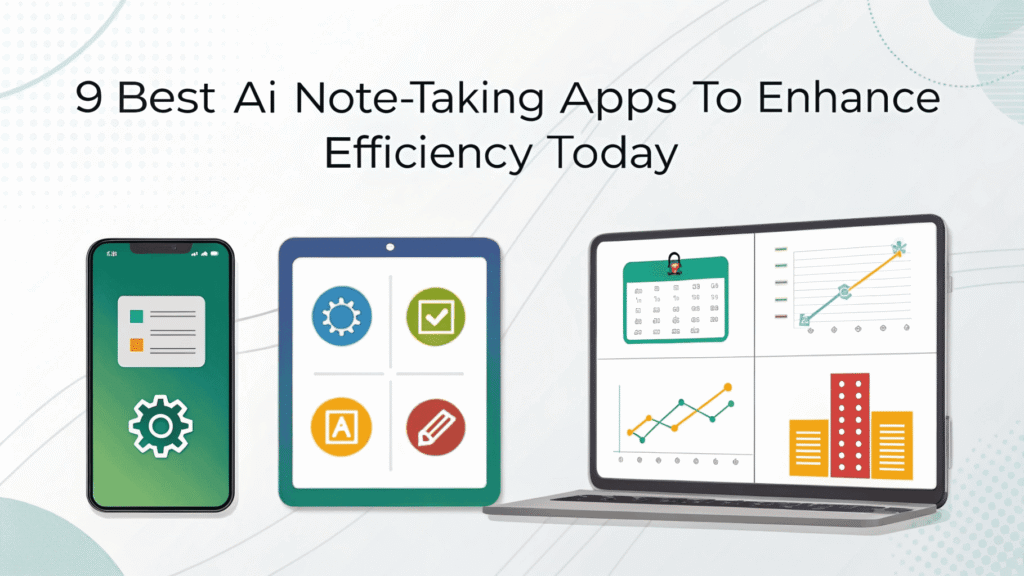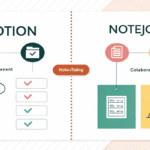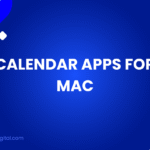
Taking notes has evolved far beyond pen and paper. AI note taking app are transforming how we capture, organize, and retrieve information. These smart tools can transcribe meetings, summarize key points, and even suggest connections between different pieces of content.
Whether you’re a student juggling multiple courses, a professional managing countless meetings, or someone who simply wants to organize thoughts more effectively, AI note-taking apps offer powerful solutions. This guide explores nine top-rated applications that can streamline your workflow and boost productivity.
What Makes AI Note Taking Apps Special?
Traditional note taking apps store your text and maybe sync across devices. AI-enhanced versions go several steps further. They can automatically transcribe audio recordings, identify key themes, generate summaries, and even answer questions about your content.
These applications use natural language processing to understand context and meaning. Some can recognize handwriting, others excel at meeting transcription, and many offer smart search capabilities that find relevant information even when you can’t remember exact keywords.
The real advantage lies in time savings and improved organization. Instead of spending hours reviewing lengthy meeting recordings or scattered notes, AI tools can extract the most important information instantly.
Top 9 AI Note Taking Apps
1. Notion AI
Notion has integrated AI capabilities directly into its popular workspace platform. The AI assistant can help generate content, summarize lengthy documents, and improve writing quality.
Key features include automated bullet point creation, tone adjustment for different audiences, and the ability to extract action items from meeting notes. Notion AI works seamlessly with existing Notion databases and pages.
The platform excels at collaborative note-taking. Team members can share workspaces, comment on specific sections, and track changes over time. The AI component adds an extra layer of intelligence to an already robust system.
Pricing starts with a free tier for personal use, while AI features require a paid subscription.
2. Otter.ai
Otter.ai specializes in meeting transcription and conversation intelligence. The app can join video calls automatically, transcribe discussions in real-time, and identify different speakers.
What sets Otter apart is its ability to generate meeting summaries, highlight key decisions, and create action item lists. The AI can even distinguish between different types of meetings and adjust its summarization accordingly.
The platform integrates with popular video conferencing tools like Zoom, Microsoft Teams, and Google Meet. Users can search through transcripts, share highlights with colleagues, and export content to other applications.
Free plans include limited monthly transcription minutes, with paid tiers offering more capacity and advanced features.
3. Mem
Mem takes a unique approach to note-taking by focusing on connections between ideas. The AI automatically links related notes, suggests relevant content while you write, and helps discover patterns in your thinking.
The platform uses a concept called “Mem X” which acts as a personal AI assistant. It can answer questions about your notes, generate new content based on existing material, and help organize information more effectively.
Mem works particularly well for researchers, writers, and anyone who needs to synthesize information from multiple sources. The AI can surface forgotten notes that become relevant to current projects.
The service operates on a subscription model with different tiers based on usage and features.
4. Fireflies.ai
Fireflies.ai focuses specifically on meeting intelligence and conversation analytics. The platform can record, transcribe, and analyze voice conversations across multiple platforms.
The AI provides detailed meeting summaries, tracks speaker talk time, identifies sentiment, and creates searchable transcripts. Users can leave comments on specific parts of conversations and share key moments with team members.
Advanced analytics help teams understand meeting patterns, participation levels, and common discussion topics. The platform integrates with CRM systems to automatically log customer interactions.
Fireflies offers both free and paid plans, with premium features including advanced analytics and longer storage periods.
5. Roam Research
Roam Research pioneered the concept of networked thought in digital note-taking. While not exclusively AI-powered, the platform includes intelligent features that help users discover connections between ideas.
The bidirectional linking system creates a web of interconnected notes. AI components suggest relevant connections, help with content discovery, and can generate insights based on note relationships.
Roam works particularly well for complex research projects where understanding relationships between concepts is crucial. The platform supports graph visualization to show how different ideas connect.
The tool requires a subscription and has a steeper learning curve compared to traditional note-taking apps.
6. Reflect
Reflect combines traditional note-taking with AI-powered features like automated backlinking and content suggestions. The platform emphasizes privacy by keeping all data encrypted and processing AI features locally when possible.
The AI can generate meeting summaries, suggest tags for better organization, and help with content discovery. Reflect also includes features like voice transcription and integration with calendar applications.
What makes Reflect unique is its focus on personal knowledge management rather than team collaboration. The interface is clean and distraction-free, designed for individual users who want powerful AI features without complexity.
Reflect operates on a subscription model with a focus on privacy-conscious users.
7. Logseq
Logseq is an open-source knowledge management platform that includes AI-powered features for note organization and content discovery. The platform stores notes locally while offering optional cloud synchronization.
The AI components help with automatic tagging, content linking, and knowledge graph generation. Users can query their notes using natural language and receive relevant results even when exact keywords aren’t remembered.
Being open-source, Logseq offers extensive customization options and plugin support. The community actively develops additional AI features and integrations.
The core platform is free, with optional paid services for cloud storage and synchronization.
8. Craft
Craft combines beautiful design with intelligent note-taking features. The AI assists with content organization, automatic linking, and smart formatting suggestions.
The platform excels at handling different types of content including text, images, files, and web clips. AI features help organize this mixed media content and make it easily searchable.
Craft includes collaboration features while maintaining a focus on individual productivity. The AI can suggest improvements to writing, help with document structure, and assist with content discovery.
The app offers both free and premium tiers, with AI features typically requiring a paid subscription.
9. Obsidian
Obsidian has grown popular for its powerful linking capabilities and extensive plugin ecosystem. While the core application doesn’t include built-in AI, numerous community plugins add intelligent features.
AI plugins can provide content generation, automatic tagging, smart linking suggestions, and integration with external AI services. The platform’s flexibility allows users to customize AI features based on specific needs.
The graph view visualization helps users understand relationships between notes, while AI plugins can enhance this with automated relationship discovery.
Obsidian is free for personal use, with paid options for commercial use and sync services.
How to Choose the Right AI Note Taking App
Selecting the best AI note-taking app depends on your specific needs and workflow. Consider these factors when making your decision:
Meeting Focus: If you attend many meetings, prioritize apps like Otter.ai or Fireflies.ai that excel at transcription and meeting intelligence.
Research and Writing: For academic research or content creation, consider tools like Roam Research or Logseq that emphasize knowledge connections.
Team Collaboration: If you work with others frequently, Notion AI or Craft might be better choices due to their sharing and collaboration features.
Privacy Concerns: Users who prioritize data privacy should consider Reflect or self-hosted options like Logseq.
Integration Needs: Check which apps integrate with your existing tools like calendar applications, video conferencing platforms, or project management systems.
Learning Curve: Some platforms like Roam Research require significant time investment to master, while others like Craft offer more immediate usability.
Maximizing Your AI Note Taking Experience
To get the most value from AI note-taking apps, develop consistent habits and workflows:
Regular Review: Schedule time to review and organize notes. AI can suggest connections, but human review ensures important information isn’t overlooked.
Consistent Formatting: Use consistent headings, tags, and formatting to help AI features work more effectively.
Audio Quality: For transcription features, invest in good microphones or ensure clear audio input for better accuracy.
Training the AI: Many apps improve over time as they learn your preferences and writing style. Regularly use AI features to enhance their effectiveness.
Backup Strategy: Even with AI-powered apps, maintain backup systems to protect important information.
The Future of Intelligent Note Taking
AI note-taking applications continue evolving rapidly. Future developments may include more sophisticated natural language understanding, better integration with external knowledge sources, and enhanced collaboration features.
Machine learning models are becoming better at understanding context and generating relevant suggestions. This means AI assistants will likely become more helpful at surfacing relevant information and generating insights from existing notes.
Voice recognition and natural language processing improvements will make transcription more accurate and enable more conversational interfaces with note-taking systems.
Transform Your Productivity Today
AI-powered note-taking apps offer significant advantages over traditional methods. They save time, improve organization, and help discover connections that might otherwise be missed.
Start by identifying your primary use cases and trying one or two applications that seem most relevant. Most platforms offer free trials or basic tiers that allow experimentation without commitment.
The key is finding a tool that fits naturally into your existing workflow while providing enough AI enhancement to justify the learning curve. With the right application, you’ll spend less time managing notes and more time acting on the insights they contain.

I am Ray Jones Digital
My current occupations: a Digital Marketer, Local SEO expert, Link Builder, and WordPress SEO specialist. Shopify SEO, Ecommerce Store Management, and HTML & WordPress Developer I have been practicing the above mentioned services for more than 10 years now As an SEO expert working with your ongoing projects.



